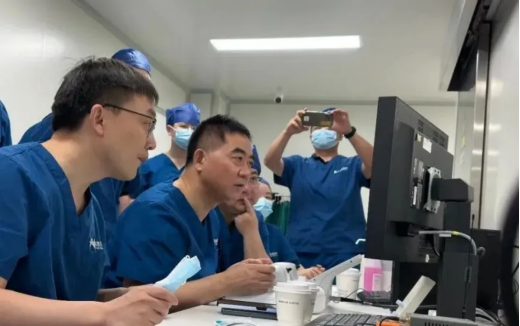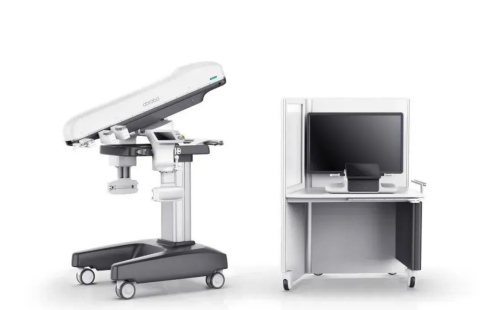In April 2024, the 89th China International Medical Equipment Fair (CMEF) successfully concluded in Shanghai, attracting widespread attention from medical technology professionals worldwide. This prominent exhibition showcased dazzling innovative products in front of both Chinese and global audiences. Among these innovations, characterized by organized, clinically guided innovation and the integration of multiple disciplines, the Chinese-made pan-vascular intervention robot, ROBOANGIO, became one of the focal points of attention.

The intelligent vascular intervention diagnostic and treatment ecosystem represents the future direction for the treatment of pan-vascular diseases, necessitating collaborative innovation and shared development among doctors, engineers, and scientists. ROBOANGIO is a collaborative effort involving Ge Junbo, Director of the Pan-Vascular Instrumentation Innovation Academy; Liu Jianmin, the Vice Director; Professor Fu Weiguo and his team; Academician Guo Shuxiang from Southern University of Science and Technology; and the AiBo Medical team. The design philosophy and technological implementation of ROBOANGIO are unique globally, facilitating a complete process in pan-vascular intervention diagnostics and treatment.

Key Features of ROBOANGIO:
· High Precision: The vascular intervention robot uses an advanced suspension drive system and precise control technology to achieve sub-millimeter accuracy, greatly enhancing the precision and accuracy of surgeries.
· Radiation-Free Operation: The use of compartmental intervention technology effectively isolates radiation within the surgical environment, protecting the health of medical staff and patients and reducing the risk of radiation damage to the human body.
· Ease of Operation: With its intuitive control interface and human-machine interaction system, doctors can easily operate the vascular intervention robot, simplifying the surgical process and reducing associated risks.
· Multifunctionality: The vascular intervention robot features multiple functional modules suitable for various clinical applications such as endovascular intervention, angiography, and stent implantation, meeting diverse treatment needs.
· Enhanced Surgical Efficiency: Due to its precision, speed, and stability, the vascular intervention robot significantly reduces surgery time, increases surgical efficiency, and minimizes complications and risks.

At this CMEF exhibition, ROBOANGIO’s display attracted a significant number of viewers and professional reviewers. Such a product offers a potential future for vascular intervention surgeries. However, the future intelligent vascular intervention diagnostic and treatment ecosystem needs to incorporate more innovative elements. OPIC continues to explore the model of “Organized Innovation Guided by Clinical Needs,” adhering to the philosophy of “doctors identifying clinical needs, integrating medical engineering research to innovate products, empowering enterprises for transformation, and serving patients.” In hospitals, universities, industry, and government, it organizes a pan-vascular medical device innovation system linking production, education, research, and application. By empowering every link in the innovation ecosystem, it creates a new productive force in pan-vascular medical science and technology innovation, ultimately leading to world-leading innovative products made in China, providing a model for the sustainable and healthy development of medical science and technology innovation.

